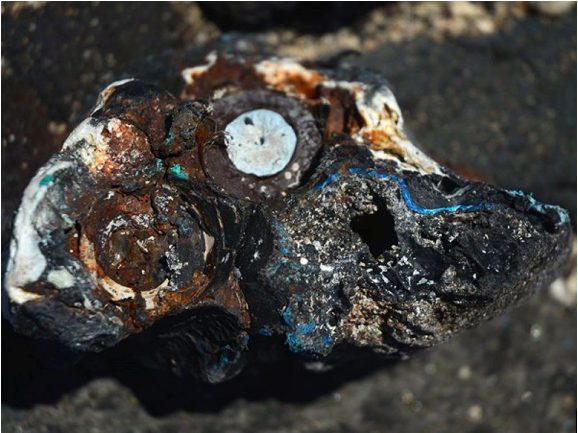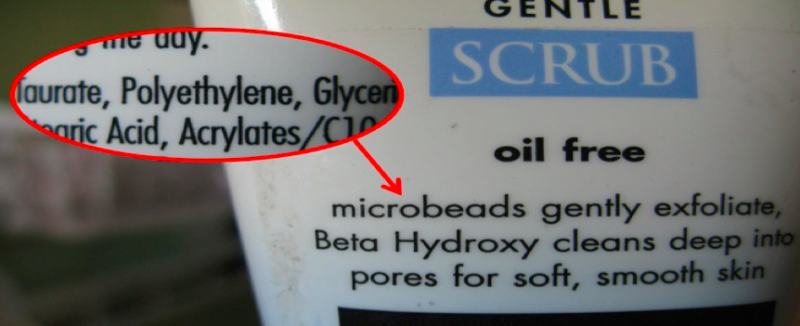The nurdles’ quest for ocean domination | TED-Ed
311,906 Views
45 Questions Answered
Best of Web
Let’s Begin…
Nurdles are the tiny, factory-made pellets that form the raw material for every plastic product that we use, from toys to toothbrushes. And while they look pretty harmless on land, they can really wreak havoc on our oceans. Kim Preshoff details the nurdles’quest for ocean domination, shedding light on the particular features that allow these pervasive polluters to persist for entire generations.
WatchThink 4 Multiple Choice &
2 Open Answer Questions Dig Deeper Learn More Discuss 2 Guided Discussions &
0 Open Discussions
2 Open Answer Questions Dig Deeper Learn More Discuss 2 Guided Discussions &
0 Open Discussions
Additional Resources for you to Explore
Captain Charles Moore was the
first to discover a large collection of plastics circulating in the Pacific
Ocean. Take a look at this TED-Ed lesson Seas of Plastic: Captain Charles Moore to learn more about his discovery of the Great
Pacific Garbage Patch.
Where do the nurdles and microplastic floating in the ocean go? Often, they are deposited on the beaches of islands near the circulating ocean gyres. Midway, an island in the Pacific, is home to a large albatross population that is currently suffering from the plastic pollution floating in our oceans. View some photos here and watch A Midway Journey: Plastic Beach to learn about this story. What can we do in our everyday lives to make a change that will impact these ecosystems in a positive manner? Can we help or is it too late?
Plastic bags are not indigenous to the Pacific Ocean! The Majestic Plastic Bag- A Mockumentary provides a unique insight into the life of a carrier bag. Plastic bags are pervasive in both our terrestrial and aquatic environments. What is the journey like that carries them to the Earth’s oceans? What problems can they cause? How can you change this?
The Anthropocene or Age of Man, has become a popular term to represent the geologic epoch that marks the global impact humans have had on Earth’s ecosystems. What kind of anthropogenic marker will humans leave behind to represent this epoch? Is it the plastiglomerate, a new kind of rock that has been found on the beaches of Hawaii? What are plastiglomerates? Will this be the geologic marker that proves to mark the geologic beginning of the Anthropocene?

What can we do to help? Five Gyres Institute has a website with many suggestions and ideas of what can be done! Get introduced to some ocean heroes who are working hard to make a difference in the world. Will you be one of those people? Helping to ban microbeads is one way you can help decrease the amount of plastics in the world’s oceans. Listen to this audio excerpt from NPR to get educated about microbeads! Check the back of your facial cleanser to see if one of the ingredients is plastic.

Let your voice be heard! Write your government representative to voice your concern. Petition a company whose products use microbeads. Ask the company to use natural alternatives such as crushed walnut shells or pumice as an exfoliant instead of plastic. You can make a difference!
Where do the nurdles and microplastic floating in the ocean go? Often, they are deposited on the beaches of islands near the circulating ocean gyres. Midway, an island in the Pacific, is home to a large albatross population that is currently suffering from the plastic pollution floating in our oceans. View some photos here and watch A Midway Journey: Plastic Beach to learn about this story. What can we do in our everyday lives to make a change that will impact these ecosystems in a positive manner? Can we help or is it too late?
Plastic bags are not indigenous to the Pacific Ocean! The Majestic Plastic Bag- A Mockumentary provides a unique insight into the life of a carrier bag. Plastic bags are pervasive in both our terrestrial and aquatic environments. What is the journey like that carries them to the Earth’s oceans? What problems can they cause? How can you change this?
The Anthropocene or Age of Man, has become a popular term to represent the geologic epoch that marks the global impact humans have had on Earth’s ecosystems. What kind of anthropogenic marker will humans leave behind to represent this epoch? Is it the plastiglomerate, a new kind of rock that has been found on the beaches of Hawaii? What are plastiglomerates? Will this be the geologic marker that proves to mark the geologic beginning of the Anthropocene?

What can we do to help? Five Gyres Institute has a website with many suggestions and ideas of what can be done! Get introduced to some ocean heroes who are working hard to make a difference in the world. Will you be one of those people? Helping to ban microbeads is one way you can help decrease the amount of plastics in the world’s oceans. Listen to this audio excerpt from NPR to get educated about microbeads! Check the back of your facial cleanser to see if one of the ingredients is plastic.

Let your voice be heard! Write your government representative to voice your concern. Petition a company whose products use microbeads. Ask the company to use natural alternatives such as crushed walnut shells or pumice as an exfoliant instead of plastic. You can make a difference!
About TED-Ed Best of Web
TED-Ed Best of Web are exceptional, user-created lessons that are carefully selected by volunteer teachers and TED-Ed staff.
Meet The Creators
- Video created by TED-Ed
- Lesson Plan created by Luka Seamus Wright